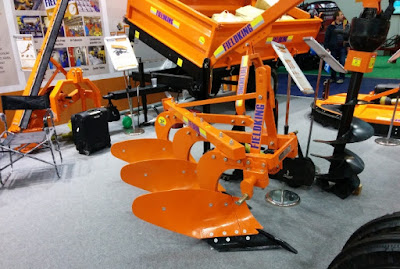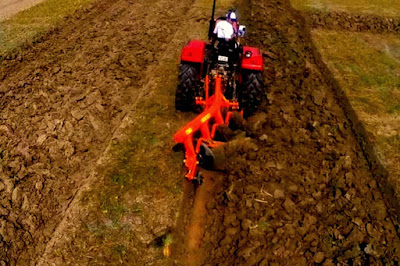Ploughing is one of the most significant soil managings
practices, been followed from centuries to form a straight, structural, grained
and moist seeding layer. Ploughing is an ancient simple yet effective farm a practice that includes granulates, cuts, and overturns the soil, forming
furrows and ridges.
Plough is one of the oldest farming implements with a
significant revolution that originated from basic and primitive ploughs to
modern ploughing machine. Traditionally, ploughing was difficult and labour-intensive
agriculture practice. But, contemporary farmers have the chance to select
between different types of ploughs and upgraded farm machinery. With the modern
farm machinery, a farmer can sit and relax in the tractor, can work on the
fields using the new technology.
Type of Ploughs
Various farm implements and tools are available today
that make every step of crop production easy, right from the soil management to
harvesting. More specifically, about ploughs, there are many types present in
the market and a farmer needs to choose the right one.
The type of plough a farmer need will mainly depend on
his field and soil type, and specific crop production. Few types of plough we
have discussed here –
Disc Plough
Disc plough generally has three or more individually
mounted discs inclined backwards to achieve maximum depth. They are mainly used
in hard, dry soils, shrubby or bushy land, or on rocky lands.
Mould- Board
Plough
A Mould Board Plough is one of the most important and
popular tillage equipment for primary tilling of the soil. This equipment is
mostly used in canal irrigated or dense rain areas on earth where weeds grow
with ease.
The purpose of using a Mould-Board plough is to invert
and pulverize the soil absolutely, dig up the weeds, scrap and old crop
residues, burying them under the soil. The design and shape of a mould-Board
Plough allows it to cut down the soil with ease and upturn it to the right
side. It buries the weeds completely that subsequently are turned into the soil
after decomposition. A Reversible mould-board plough is an improved model of
the same mould-board plough.
Rotavator Or
Rotary Plough Or Rotary Tiller
A Rotary Plough, Rotary Tiller or Rotavator is used to
break, mix and aerate the soil and increasing its oxygen count and makes it
good for seeding and harvesting. Rotavator works with a set of blades or rotors
connected to the engine that breaks through the soil when revolving. This a
piece of agriculture machinery used as tractor implement in modern farming
practices.
So, choose the proper plough for your farm after
analyzing your need. After all, well prepared and managed soil is the basis for
fruitful crop production.












